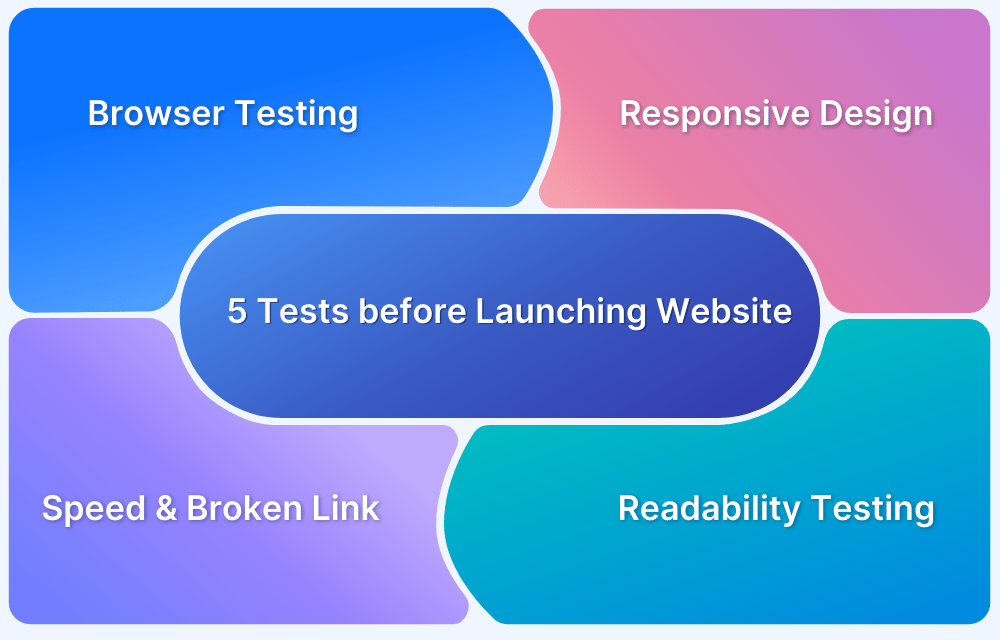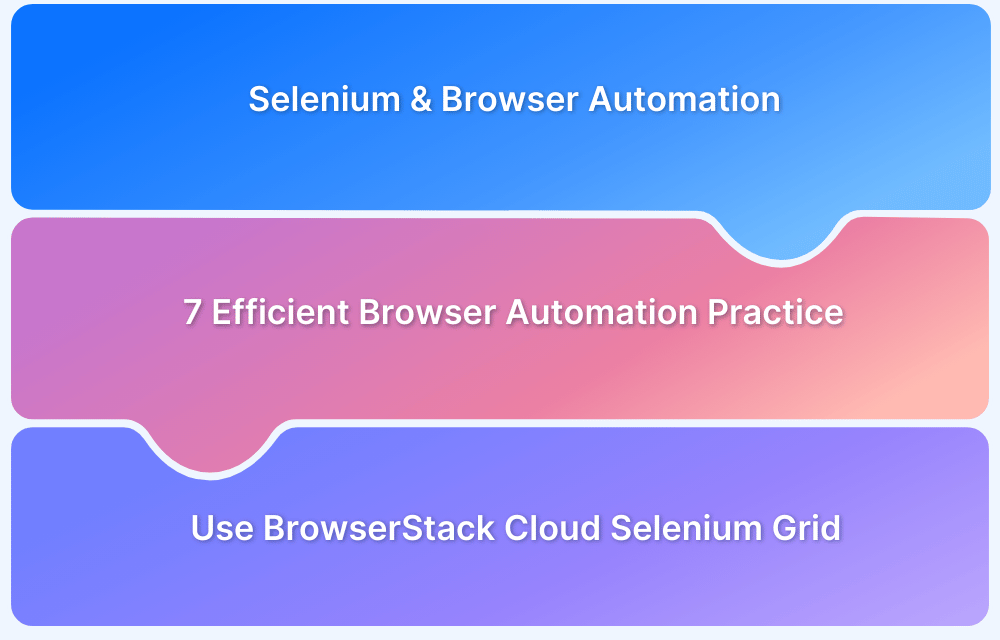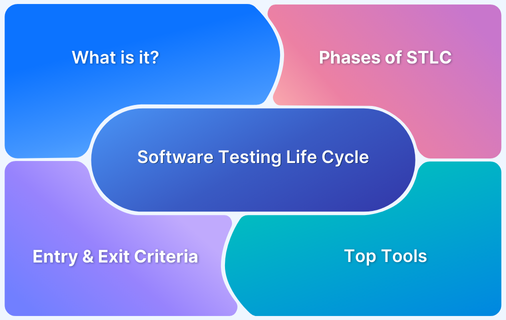Test optimization involves refining your testing approach to improve efficiency, reduce redundancy, and enhance overall software quality.
It ensures that tests are fast, reliable, and relevant, helping teams detect issues early, accelerate release cycles, and make the best use of available resources.
Overview
Key Test Optimization Techniques
- Incorporate testing from the early stages of development
- Creating precise and valuable test suites
- Select the right tools or frameworks
- Conduct reviews at regular intervals
- Prioritize the use of Wait commands
- Opt for parallel testing on real devices
- Test Case Prioritization
- Flaky Test Case Identification & Resolution
- Test Data Management
- Parametrization or Data Driven Testing
The following techniques are widely adopted to achieve effective and scalable test optimization.
What is Test Optimization?
At its core, test optimization refers to making the test process more time and cost-efficient without compromising the accuracy of results. When implemented the right way, test optimization helps QA teams get the best out of their testing efforts. It also helps teams streamline processes to deliver consistent results in the long run.
Test optimizations involve focusing on the following activities:
- Reducing the size of test suites
- Create a minimal subset of test suites sufficient for achieving given requirements
- Eliminating redundant test cases
- Evaluating the ideal test coverage criteria
- Increasing the maintainability of test cases
Optimizing test suites right from the initial stages is integral to ensuring software quality. There are several useful strategies to optimize test suites for providing efficient results. Listed below are a few proven test optimization techniques teams can adopt to streamline the pipeline.
Why should you perform Test Optimization?
Test optimization is critical for faster, more reliable, and cost-effective software delivery. Here’s why it matters:
- Accelerates Testing Cycles: Test case optimization reduces execution time, allowing quicker feedback during development and CI/CD pipelines.
- Improves Resource Efficiency: Optimized testing uses computing power, devices, and QA resources more effectively, lowering operational costs.
- Enhances Test Reliability: Reduces flaky tests and unstable environments, leading to more consistent and trustworthy results.
- Increases Test Coverage with Less Effort: By eliminating redundant tests and focusing on risk-based areas, you get more value out of fewer test cases.
- Facilitates Scalability: Enables your QA process to grow alongside your product without becoming a bottleneck.
- Boosts Developer Confidence: Faster, more reliable feedback loops help developers identify and fix issues earlier.
- Improves Release Quality: Catching critical bugs early means more stable releases and better user experiences.
Key Test Optimization Techniques
Optimizing test suites right from the initial stages is integral to ensuring software quality. There are several useful strategies to optimize test suites for providing efficient results. Listed below are a few proven test optimization techniques teams can adopt to streamline the pipeline.
1. Incorporate testing from the early stages of development
The test process must be performed simultaneously with development from the initial stages. One must consider testing as a continuous process rather than a phase to be executed and completed only after a particular point.
As the code base is considerably smaller in the initial phase, identifying and resolving critical bugs becomes much easier as compared to fixing them in the latter stages. Naturally, this approach proves to be cost-effective and helps both developers and testers deliver better software.
2. Creating precise and valuable test suites
QA engineers must focus on creating test scenarios that evaluate the critical functionalities of an application. Grouping the most essential tests in small suites and executing them helps qualify the application for further testing. For example, if it’s an e-commerce app, the key tests would include testing product categories, selecting any product, adding multiple products to the cart, making payments, and checking out.
Naturally, if the products are not visible in the cart, it won’t make sense to proceed with further tests. Such tests are termed as build verification or build acceptance tests. Teams must create these test suites, and if test suites are already formed, one needs to ensure that they run quickly and successfully.
3. Select the right tools or frameworks
Although one might think of this step as too obvious, it plays a significant role in the long run. It’s very critical for teams to understand their test goals and accordingly choose the right tool or framework for automation testing. Teams must consider the following parameters before choosing an automation tool:
Nature of Application Under Test:
- Is the application under test mobile-based or web-based?
- Which platforms or browsers does it need to be tested for?
For running cross-browser tests, consider an open-source tool like Selenium, or a cloud-based testing platform like BrowserStack, and for test automation on mobile platforms, tools like Appium are ideal.
Programming skillset:
Teams must choose tools that support the programming languages QAs are comfortable with, while also meeting the needs of the software being tested.
Read More: Top 18 Cross Browser Testing Tools
4. Conduct reviews at regular intervals
Reviews can be conducted either formally or informally among team members in both development and QA teams. Formal reviews include meetings for code reviews, walkthroughs, and inspections. Reviews at regular intervals help monitor overall progress. They also allow teams to evaluate whether the product is meeting the predetermined requirements and ensure that code quality standards are maintained.
Regular reviews are also necessary to track the project’s progress as well as keep team members aligned with their goals.
5. Prioritize the use of Wait commands
Conventionally, testers use Sleep commands to deal with the delay in server response or to wait for a resource (a web element, for example) to load. However, it makes test scripts inefficient as it didn’t guarantee successful test execution. This is because sleep commands pause the execution of test scripts for a specified amount of time. The back-end response time, or the time taken to load an elemen,t can be less than or greater than the time specified in the script. Naturally, this increases the instances of flaky tests.
In order to tackle this issue, replace all sleep commands with wait commands. Proper application of implicit and explicit wait commands enables QAs to handle certain elements that take more time to load. As soon as Selenium WebDriver locates the element, the test will continue its execution. Additionally, it also eliminates unnecessary delays in execution as in the case of the Sleep command. Thus, wait commands optimize the overall test scripts and make execution more reliable.
6. Opt for parallel testing on real devices
An ideal way to speed up the execution of automated test scripts is to execute tests simultaneously across multiple device-browser-OS combinations. This will help complete the execution of the entire test suite in much less time.
For example, if there are twenty tests to be run, execute each test on different unique devices in parallel. If each test takes five seconds to run, the entire test suite will be completed in five seconds. On the other hand, if the test were executed on a single device, it would have taken a hundred seconds.
Teams can opt for cloud-based platforms like BrowserStack that offer automated parallel testing in real environments. Its real device cloud empowers teams to choose from 3500+ real devices and browsers for running automated and manual tests for both websites and mobile apps.
Try Parallel Testing on Real Device for Free
7. Test Case Prioritization
Not all test cases have equal impact. Test case prioritization ensures that the most critical and high-risk scenarios are executed first, especially when time or resources are limited.
Techniques include risk-based, requirement-based, or recent code change-driven prioritization. This helps catch the most severe defects early in the cycle.
8. Flaky Test Case Identification & Resolution
Flaky tests are unreliable and undermine confidence in automation. Identifying flaky test cases that pass or fail inconsistently without code changes is essential for maintaining stability.
Use rerun tracking, logging, and test analytics to detect patterns and resolve them by addressing timing issues, dependencies, or poor assertions.
9. Test Data Management
Reliable and relevant test data is the backbone of accurate test results. Optimize your test data strategy by generating clean, reusable, and context-specific datasets.
Consider using synthetic data for edge cases and automating data resets to ensure consistency across test runs. Proper test data management reduces test failures and improves reliability.
10. Parameterization or Data-Driven Testing
Instead of writing multiple similar test cases, use parameterization to run the same logic with different input values. This reduces redundancy and makes tests more maintainable.
Most modern frameworks like TestNG, JUnit, PyTest, and others support data driven testing, allowing broad coverage with minimal code duplication.
What are Testing Cycles?
Testing Cycles are structured testing phases repeated throughout the software development lifecycle in order to ensure the quality and functionality of an application before its release. Each testing cycle includes steps like planning, executing tests, reporting bugs, fixing issues and re-testing. The cycle continues till the software meets the expected quality requirements.
Why Optimize Your Testing Cycles?
Here’s why you should optimize your testing cycles:
- Faster release cycles: Detect and fix issues earlier and accelerate the release cycles.
- Enhanced resource utilization: Give more time and effort to the tests that can make more impact.
- Early bug detection: Catch bugs earlier. This makes it easier and cheaper to fix them.
- Minimized testing costs: Reduce the need for redundant testing and minimize the overall testing costs.
Read More: How to set up a Bug Triage Process?
How to prepare a Test Case for Test Optimization?
Here’s how you can prepare a test case for test optimization:
- Define clear objectives: Ensure that every test case has specific goals related to a user story or requirement.
- Keep it simple: Write test cases to test one thing at a time for easier maintenance and meaningful results.
- Prioritize based on risk and impact: Prioritize test cases that cover high-risk, high-usage, or high-business-impact.
- Make it reusable: Write test cases so they can be reused in a different module or project to improve efficiency.
- Use modular and data-driven approaches: Break down tests into small reusable steps and separate test data wherever possible. This helps maximize coverage.
- Ensure traceability: Ensure that every test case is traced back to requirements or features. This helps to keep track of coverage and spot gaps easily.
- Document expected outcomes: Your documentation should contain clear mentions of expected results fo that your team can verify success or failures quickly.
- Automate: Identify areas that can be automated to accelerate the process and reduce manual effort on repetitive tasks.
How does BrowserStack Help Optimize Test Cases?
Here’s how a tool like BrowserStack Automate can help optimize your test cases effectively:
- Access real-devices and browsers instantly: Test across 3500+ real devices and browser combinations on a real-device cloud. This helps ensure wider coverage and requires minimal set up time.
- Parallel testing: Run hundreds of tests concurrently across different devices and browsers to minimize the execution time significantly.
- Great automation support: Integrate seamlessly with major test automation frameworks like Selenium, Cypress, and Appium to scale test execution efficiently.
- Real-time debugging: Access instant logs, screenshots and video recording for each test for faster issue detection and resolution.
- Seamless CI/CD Integration: Integrates seamlessly with popular CI/CD tools like Jenkins, Circle CI and more to accelerate your testing and development efforts.
Conclusion
Optimizing test scripts increases the reliability and speed of test execution. It enhances stability and helps eliminate flaky tests. Incorporating the test optimization techniques mentioned above will enable teams to speed up test execution and get the best out of their efforts.







